Spotlight on Michael Hanson
Jan 12, 2015
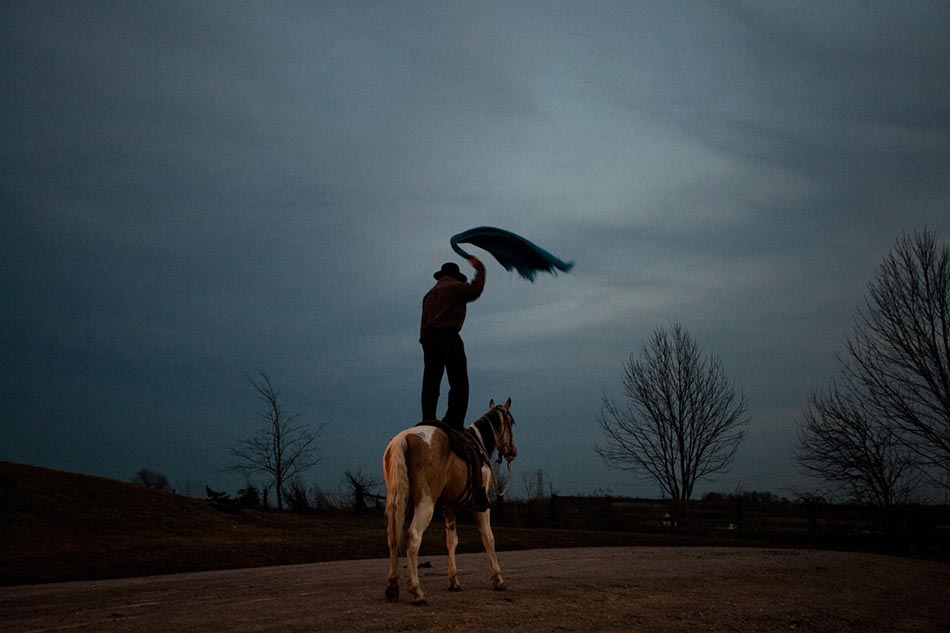
TID:
Thanks for your time, Michael. This image is surprising, can you tell us a little about it?
MICHAEL:
Thanks for asking me to be a part of TID. What a special honor for me to be alongside such great photographers.
I was walking back to my car after a day shooting a horse auction in a rural Ohio community when I saw this boy walking with his horse to a flat open gravel area. I can't tell you what stood out but figured I should follow in case something happens. When he reached the clearing, he stood on his horse waiving a towel. He wanted to get the horse ready for the auction house by training him with a distraction. A spooked horse in the auction house isn't worth much money. I started this series a few years ago during a trip to Ohio. I went there on an assignment to shoot a portrait for a magazine in Cleveland. Traveling from Seattle to Ohio isn't too bad but I figured it would be a good time to see what else is happening in the mid-West. I spent a few days with the Rick Santorum campaign then I stumbled upon this town and this auction and a series began. Since then, I've returned to Ohio and traveled to Florida and Maine for the series.
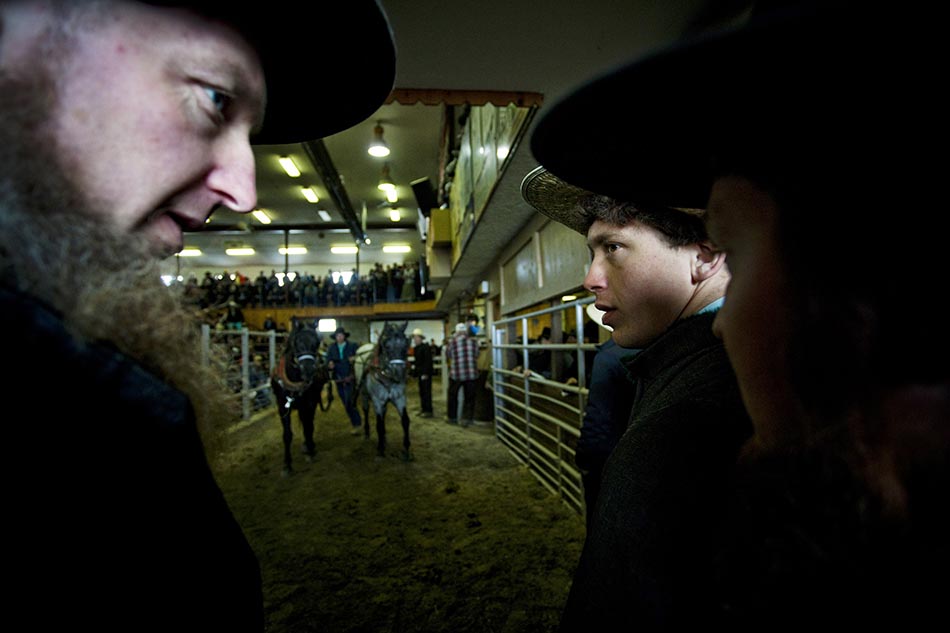
TID:
Since this is part of a larger body or work, can you talk about what drew you to this? What was your motivation?
MICHAEL:
I know I'm not the first to shoot inside an Amish community but it's still a little difficult to gain the access and trust. The communities aren't welcoming to photographers and that challenge was attractive. It's also interesting to meet a culture that is unique and simple and in the middle of the US. I'm often traveling abroad to find these situations and thought it would be a good small project to look at one in our country. In the beginning, I was working on a story about food and I was in touch with an Amish family who had a dairy farm. We are always hearing about local food and how the connection between small farmers and consumers is an important step in solving environmental issues but also to make a more just food system. In a way, the Amish are already doing this. They farm their land and buy local. That's what originally brought me into the Amish community. There's plenty to question within the Amish but there are positive aspects as well.
TID:
What challenges did you encounter while working to making these images, especially at the beginning?
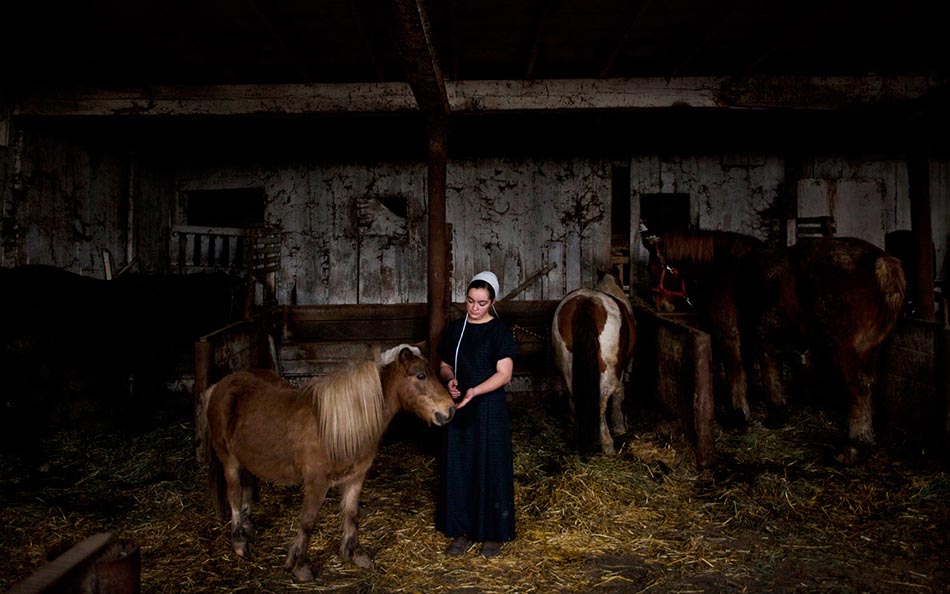
MICHAEL:
The biggest challenge was to not overshoot. Maybe it was the light or the scene but I saw a lot of pictures in the beginning and I didn't want to overdue it. I felt like I had 3-4 days if I'm lucky. I live thousands of miles away and without an assignment, I couldn't spend weeks easing into the community. I had to get a few shots quickly. But at the same time, I knew that if I just fired away and shot everything, I wouldn't be welcomed after an hour. It was a challenge to stay patient.
TID:
How did you handle and overcome these problems?
MICHAEL:
As for the patience part, I reminded myself that though I wasn't shooting, I was still setting up a shot. In a way, it's like research. It's not the most glamorous part of the business but it leads to good pictures so we all do it. Besides, I actually really like some of the families and was genuinely curious about their lives. It wasn't hard to leave the camera in the car and work with them. I know it's awkward when someone stands around talking while another person is working so I offered to help. I moved bails of hay, wood, and cleaned up the barn. And, I like manual labor. I sit on a plane or in a rental car or at my computer too much. Then, when the light was good or there was a free minute, I might take a few photos. It made me more accessible as well. They asked me questions about my family and my life and that started a relationship. It keeps everyone relaxed. And those are the photos I wanted.
TID:
What has surprised you about your work on this project?
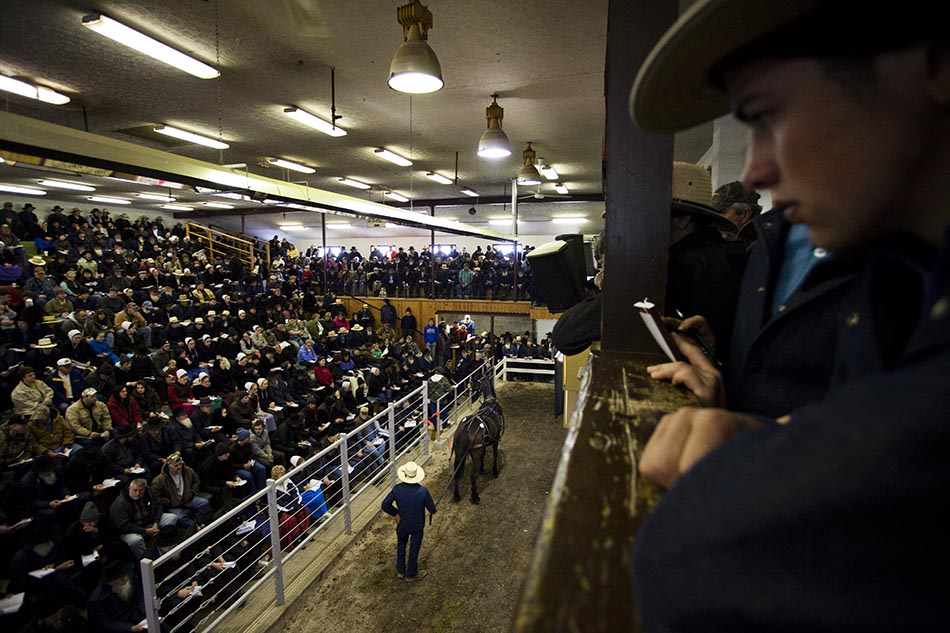
MICHAEL:
I'm not sure how to answer this. It was nice to see that I can make a few decent images within a small time frame. They aren't the best images and I'm sure most photographers would come back with great work but I was surprised at how quickly I was able to gain access. I thought I might get one day on the farm or one day at the auction but for some reason, they didn't reject me as quickly as I thought. I'm not saying that everyone was hugging me and shaking my hand but I was able to blend in easier than I had expected.
TID:
Can you tell us specifically what was going on both here and in your mind leading up to the picture?
MICHAEL:
Yeah, I was really tired. I was happy with what I had shot that day and was looking forward to being finished. I had spent the majority of the day within the auction house and roaming its backstage horse stalls. There's a rush of pressure and excitement at sunset, and I shot frantically as the sun hit the horizon and the hour following. I was walking to the car thinking the shooting was done when I saw the boy and walked towards him. My exposure settings were already in place. Somehow I knew that until I was in the hotel, I wasn't finished. As for the composition, I needed to get him away from the silhouetted trees in the background or he'd be lost.
Ideally, the horse would be slightly to one side as well so we could really see what he was standing on. And, the towel needed to be waved in a way that it looked different than his body. The biggest challenge was the background. I needed to be sure that the background didn't ruin a really nice scene. And, I only had a minute or so to move around to make it happen. Just as quickly as he hoped up on the horse, he was down and it was over. It was one of those rare photographs that I felt was strong as soon as I shot it. Usually, I don't spend a lot of time looking at the images on the camera. However, this was like the old days of rushing back from the camera store and tearing open the 35mm slides at every stoplight. I flipped through those images all the way to the hotel.
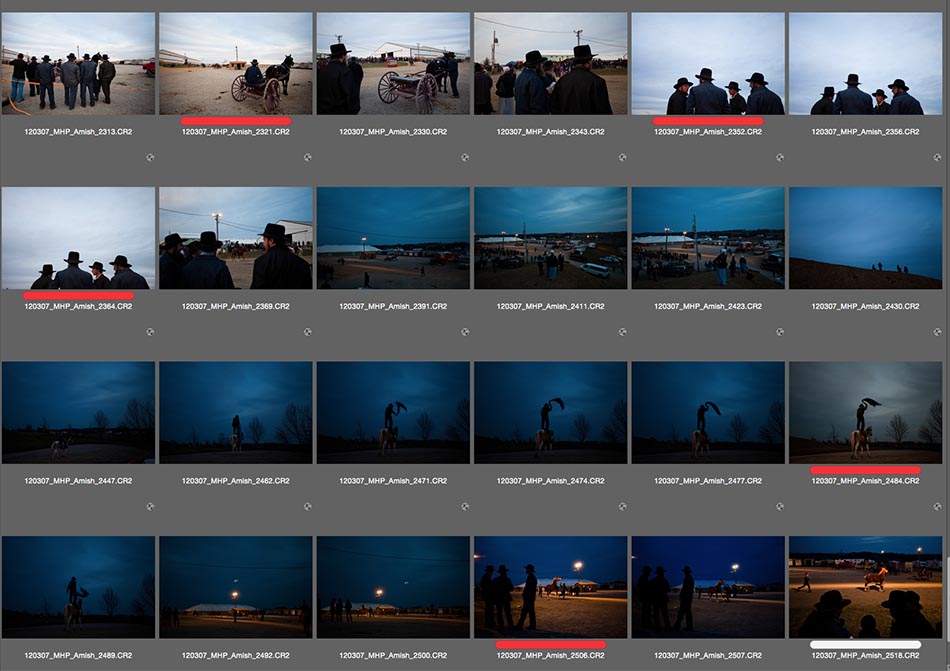
TID:
What have you learned about yourself in the process of making these images?
MICHAEL:
I reminded myself how important it is to carve out time on the calendar for personal work. Like many photographers, I'm cramming office work, assignments and personal life into a really small time frame. I enjoy committing time to a project and letting it go wherever it goes. It's hard to be away from home and paid work to sit in a hotel in rural Ohio waiting on the light to change but it's a means to an end. Obviously, I'm thankful for assignments but it's nice to make images that don't have a destination immediately. And, I've grown to be an independent person and realize how nice it is to spend a few days/weeks buried in a story.
TID:
What have you learned about others?
MICHAEL:
People are curious about other people no matter the place or culture. During these trips, I've had many members of the Amish community ask me to send them photos or to see the images. It seems natural that humans are interested in other humans. The whole hatred of photography is persistent throughout many of these communities but it isn't written in stone.
TID:
In conclusion, what advice do you have for photographers?
MICHAEL:
That's a big question and might require too long of an answer but I'll simplify. I'm at the point where I take the photos I really like and work on stories that are interesting to me. I'm trying to avoid chasing stories or trends that aren't mine. I want to keep partial blinders on. One reason is because it's hard to not be distracted and feel competitive after seeing all the social media and self-promotion of people's work. And secondly, because it's just more fun. I'm starting a few projects in 2015 that I'd like to think have some impact whether it's on a small scale or larger one but at the end of the day, I'll chase down an image simply because I find it interesting and go home feeling satisfied.
It's hard to tell aspiring photographers to go after personal work and shoot what they love. That sounds great but how do they pay rent? At the beginning, and really to this day, there's a balance between assignments and commissions and personal work. Occasionally they overlap. But the balance is what I'm after.

:::BIO:::
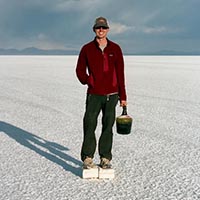
Michael Hanson began his photography career as a minor league baseball player in the Atlanta Braves organization. Off the field he documented the lives of players like himself. When baseball ended, he apprenticed with photographers around the country. Now he's on his own and has won a few photo awards: PDN30 New & Emerging Photographer (2013), One of the World's Top Travel Photographers by Popular Photography Magazine, and Images of the Year by American Photo. He recently completed his first film, Who Owns Water, about a water battle in his native South. His fine art work is in the Elton John Collection. Michael lives in Seattle, WA.
You can view more of his work here:
@hansonmphoto - instagram
Michael Hanson - facebook